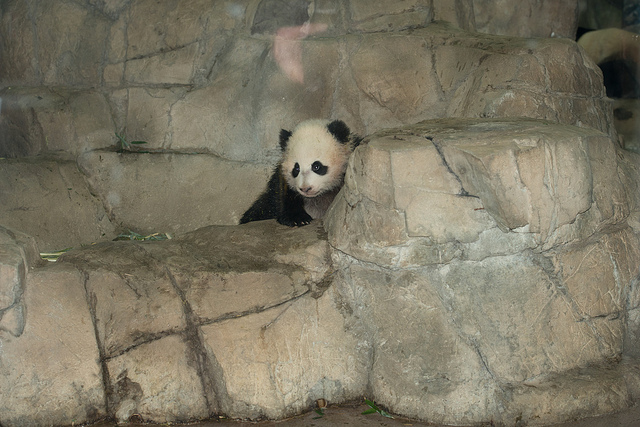National Zoo's Panda Bao Bao Readies for Big Debut

The nearly 5-month-old giant panda cub Bao Bao at the Smithsonian's National Zoo will make her public debut in a few days.
Those with a "Friends of the National Zoo" membership have exclusive access to the panda habitat in Washington, D.C., this week, but the general public will finally get to lay their eyes on Bao Bao on Saturday (Jan. 18).
The darling of panda cam fans, Bao Bao was born to 15-year-old panda mom Mei Xiang (may-SHONG) on Aug. 23, 2013. Like many pandas born in captivity today, Bao Bao, whose name means "precious" or "treasure," was conceived artificially. [See Photos of Mei Xiang and Bao Bao]
Mei Xiang was inseminated with sperm after failing to mate naturally with male partner Tian Tian last spring during the panda mom's brief window of fertility. But since it's virtually impossible to detect pregnancy in female pandas — they can go through a "pseudopregnancy" even when they don't conceive — Bao Bao's birth came as a happy surprise. That the cub is healthy is also good news for the zoo, as she gave birth to a second stillborn cub the day after delivering Bao Bao. And in September 2012 Mei Xiang gave birth to a cub that died after just a week.
The United States welcomed two other newborn pandas last year: female twins at Zoo Atlanta named Mei Lun and Mei Huan, born on July 15, 2013.
There are more than 300 pandas living in captivity worldwide. All of them technically belong to China, which loans the bears to other institutions. In the wild, there are as few as 1,600 pandas living in mountainous forests. They are the rarest bears in the world, and they face threats like habitat destruction and fragmentation, and perhaps even global warming, which could threaten bamboo, their sole source of food.
Editor's note: This story has been corrected from an earlier version that stated the twins born at Zoo Atlanta are male. After genetic testing, the zoo announced in December that the panda cubs are actually female.
Get the world’s most fascinating discoveries delivered straight to your inbox.
Follow Megan Gannon on Twitter and Google+. Follow us @livescience, Facebook & Google+. Original article on LiveScience.

